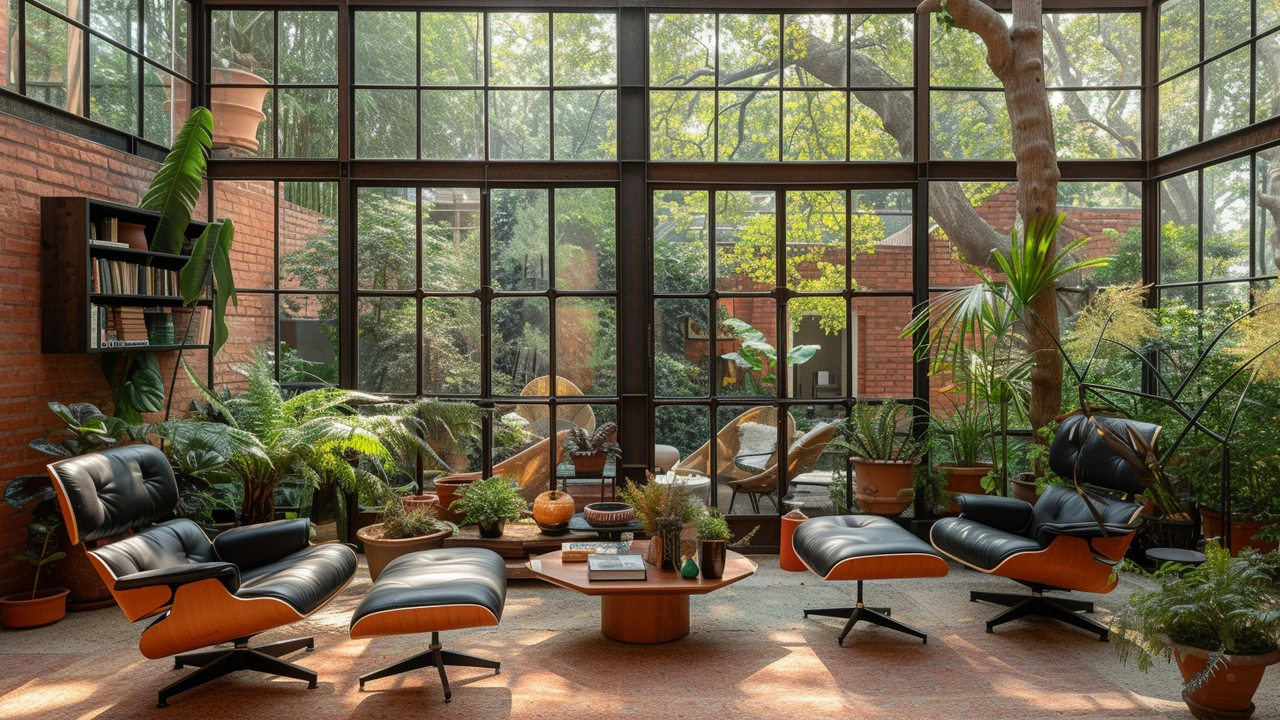Design Trends: From Revival Styles to Minimalism — What’s Shaping Spaces Now
Old styles keep coming back and new ones steal the spotlight. Want to know which design trends actually matter for your home or the next project? This page pulls together clear, usable trends seen across architecture and interiors — from Gothic spires to clean tech minimalism.
Historic revival is hot. You see it in Greek Revival columns on modern civic buildings, Gothic Revival pointed arches used in boutique hotels, and Dutch Colonial gambrel roofs returning in suburbia. Revival isn't copying the past — it's reusing strong shapes and stories to give new buildings instant identity.
Why revival keeps winning
People crave familiarity and character. A Georgian façade or Beaux‑Arts detail signals stability; Craftsman porches feel human and approachable. Designers mix these elements with modern systems — better insulation, updated layouts — so the look is nostalgic but the function fits today's life.
What minimalism and tech are changing
Minimalism in tech and interiors is more than white walls. It's about prioritizing features that work and ditching distractions. In product design that means simpler interfaces; in homes it's open plans, hidden storage, and fewer materials that compete for attention.
Balance matters. Pair a Baroque mirror or Rococo curve with a pared-back sofa. Or use a single expressive feature — a stained glass window or a dramatic dome — against plain finishes so it reads as intentional, not cluttered.
Look for hardware trends that matter: large black metal profiles, warm brass, and matte finishes. These small choices change how light and shadow read, and they help bridge old and new styles.
Color and pattern trends are practical. Earthy, muted palettes make historic rooms feel current. Bold accents — a single deep blue door or a patterned tile floor — give personality without overpowering the architecture.
Public spaces borrow from residential trends: city halls with Greek columns get human-scaled entries; postmodern facades adopt playful motifs to invite curiosity. Architects today aim to tell a story quickly — guessable silhouettes help people orient and remember places.
How to use these trends now: pick one historic reference, one modern tactic, and one simple material choice. Example: keep a Colonial symmetrical layout, open the kitchen for modern flow, and add matte black fixtures. That combo looks coherent and lasts beyond the next season.
Want deeper reading? Explore our posts on Roman engineering, Gothic Revival, Beaux‑Arts preservation, and minimalism tips for practical examples and restoration advice. Each article shows how past ideas keep shaping fresh, real-world design choices.
Sustainability and adaptive reuse are major trends that actually save money. Reuse existing masonry shells, upgrade windows for comfort, add insulation, and bring plants into courtyards or roofs. Local materials and reclaimed wood cut costs and add texture while efficient HVAC and LED lighting lower bills. Small changes like water-saving fixtures and green roofs make old buildings useful for another century.
Start small: test one room, measure results, then scale up — your budget will thank you and time.

Revivalism: The Revolution in Modern Aesthetics
Delve into the fascinating world of revivalism, where echoes of the past shape our modern aesthetics. Discover how this artistic movement is reshaping design trends, blending history with contemporary flair. Whether it's architecture or interior design, revivalism offers a fresh perspective by reimagining historical styles. Learn practical tips to incorporate revivalist elements into your living space. This journey into aesthetics reveals how revisiting history can redefine modern living.
Read more
Exploring Postmodern Architecture: A Journey into Artistic Freedom and Innovation
In the realm of architectural evolution, Postmodern Architecture stands out as a defiant movement that broke free from the shackles of modernist principles, championing diversity, complexity, and playful irony. This article dives deep into the essence of Postmodern Architecture, exploring its roots, key characteristics, influential figures, and iconic buildings. It also sheds light on the movement's impact on contemporary design and the ongoing debate surrounding its place in the architectural canon. By providing a comprehensive overview, this narrative aims to celebrate the bold statement of artistic freedom that Postmodern Architecture embodies.
Read more
The Influence of Deconstructivism on Contemporary Design
Welcome to my latest blog post! Today, we're going to dive deeply into the influence deconstructivism has had on contemporary design. This exciting perspective, known for its fragmentary design and non-rectilinear shapes, challenges conventional design norms. It has positively disrupted the world of design, bringing a fresh, avant-garde feel to many modern structures. Whether it be in architecture, fashion or product design, deconstructivism is reshaping the landscape. Join me as we explore this fascinating topic.
Read more
Revivalism: The Future of Interior Design
Hey, I'm really excited to share some insights on a new phenomenon trending in the world of interior design: Revivalism. It's a unique blend of bringing the past to life in contemporary spaces, acting as a portal between the old and the new. This is more than just a simple trend, I believe it's the future of interior design. Tune into this post for some first-hand advice and predictions on this emerging trend. Let's journey together into the future of home decor, shaped vibrantly by the captivating charm of the past.
Read more